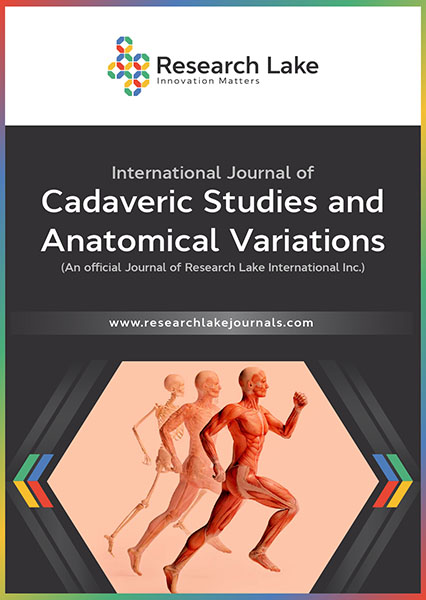Rare Cadaveric Finding of a Horseshoe Kidney in the Presence of an Abdominal Aortic Aneurysm: A Case Report
Abstract
Horseshoe kidney is a congenital malformation that occurs during gestational development as a result of the fusion of the parenchyma of both kidneys at their lower poles. This leads to the malrotation of the urinary tract and abnormal renal vasculature. The co-existence of horseshoe kidney and abdominal aortic aneurysm is rare; it is found in approximately 1 in 700 autopsied cases and only 0.12% of patients undergo surgical repair of the abdominal aortic aneurysm. Both horseshoe kidney and abdominal aortic aneurysm usually present asymptomatically, and diagnosis may be made by physical examination, incidental findings on imaging, or during post-mortem examination. Furthermore, physicians face a great challenge in the medical and surgical management of these conditions due to the lack of standard guidance. In this article, we present a cadaveric case of a horseshoe kidney accompanied by an abdominal aortic aneurysm. The case report will demonstrate and categorize the horseshoe kidney with the Eisendrath system as type II and III classification, as well as discuss anatomical variations and medical management of the co-existence of a horseshoe kidney and abdominal aortic aneurysm.
Copyright (c) 2023 Yee Eun Lee, Celine Asbury, Gabriel Bailey, Madelyn Mull, Archa Rajesh, Alexander Taylor, Savannah Newell, Kristina Zarenko

This work is licensed under a Creative Commons Attribution-NonCommercial 4.0 International License.
Copyright © by the authors; licensee Research Lake International Inc., Canada. This article is an open access article distributed under the terms and conditions of the Creative Commons Attribution Non-Commercial License (CC BY-NC) (http://creativecommons.org/licenses/by-nc/4.0/).















